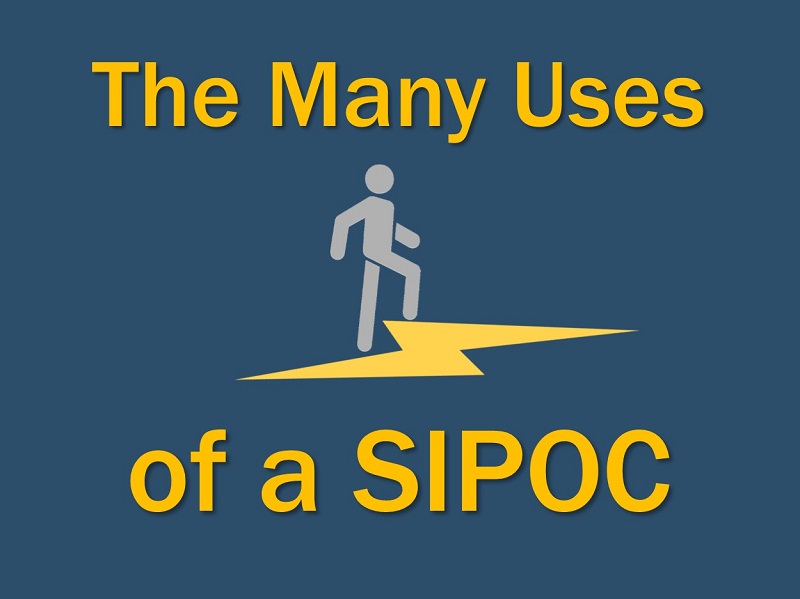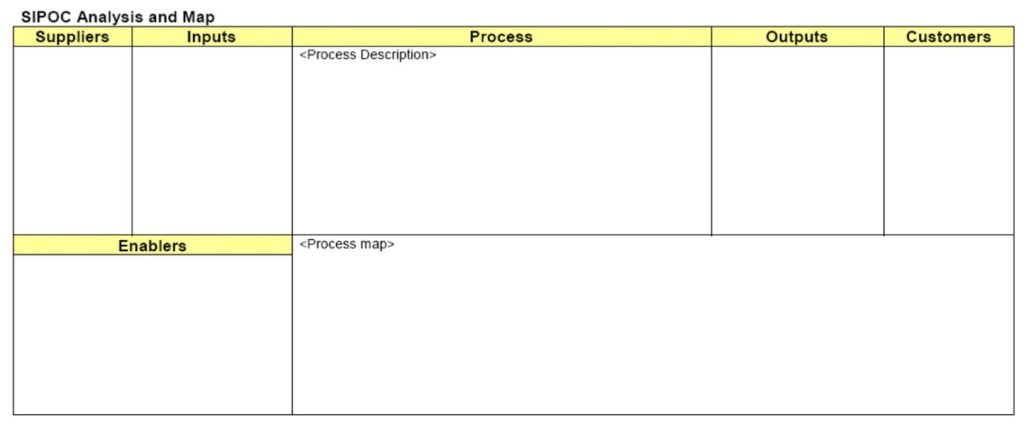In this Lightning Cast, we explore the many applications of a SIPOC and how it can help you on your next project.
A Lightning Cast is a shorter form episode modeled after lightning talks. You’ll get valuable content in 8 minutes or less.
One of the most valuable but underused tools is a SIPOC. The acronym SIPOC stands for Suppliers, Inputs, Process, Outputs, and Customers.
The SIPOC diagram is a tool for creating a visual representation of a business process. However, it’s different from process flow diagram and has several uses beyond a simple process diagram.
The SIPOC is usually associated with Six Sigma as a tool you can use as part of a process improvement project, but it’s so much more.
Let’s look at the components of the SIPOC . . .
Imagine a document with five columns; one for suppliers, one for inputs, process, outputs, and one for customers. Let’s start in the middle with the process.
In the process column, we’re looking for the high-level business process. We want to describe that process in seven steps or less. It should be very high level with no decisions.
With an understanding of the high level process, we can identify what inputs are necessary for the process to be successful. From there, you can identify the suppliers are required to get those inputs.
Now that we have the suppliers, inputs, and high level process, we can turn our attention to the other side and identify the outputs of that process. From there, we identify which customers will use those outputs.
When you create a SIPOC in this way, it’s a great tool to understand the upstream and downstream impacts of a process change or process improvement initiative.
In addition to process improvement initiatives, a SIPOC is a great scoping tool and can be used to identify requirements.
While people often start with the process, you can also use a SIPOC to define a new process starting with the customer. Start by identifying your target customers and determine what outputs or outcomes would be valuable. Next, determine what process is needed to deliver those outputs or outcomes. Finally, identify the inputs needed and the suppliers of those inputs.
Listen to the full episode for examples of how to use a SIPOC, why it makes a great scoping tool, and how you can use it to find small slices upon which you can iterate to develop great products.
Thank you for listening to the program
To get more valuable content to enhance your skills and advance your career, you can subscribe on iTunes and other podcatchers.
Also, reviews on iTunes are highly appreciated! I read each review and it helps keep me motivated to continue to bring you valuable content each week.








